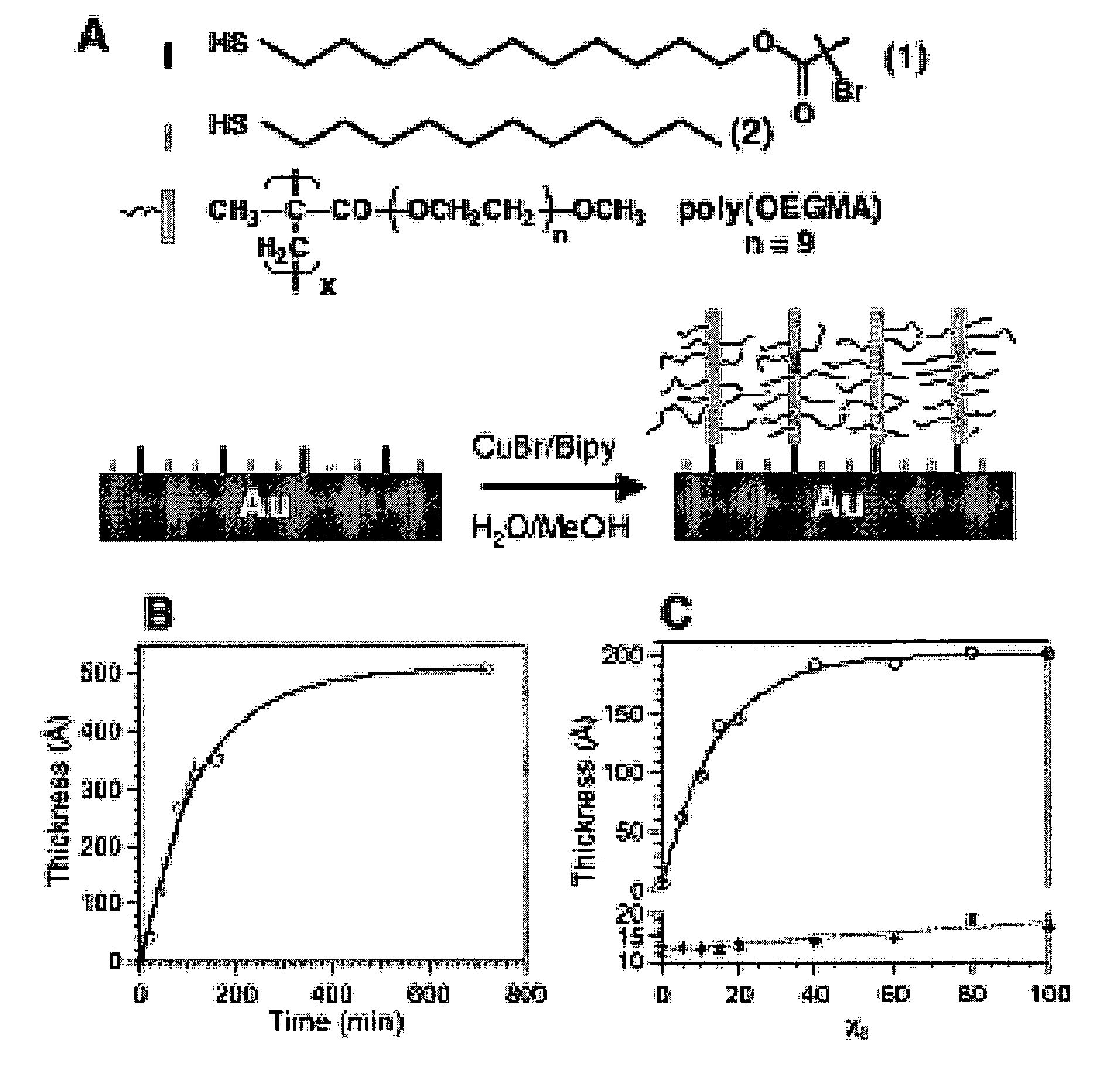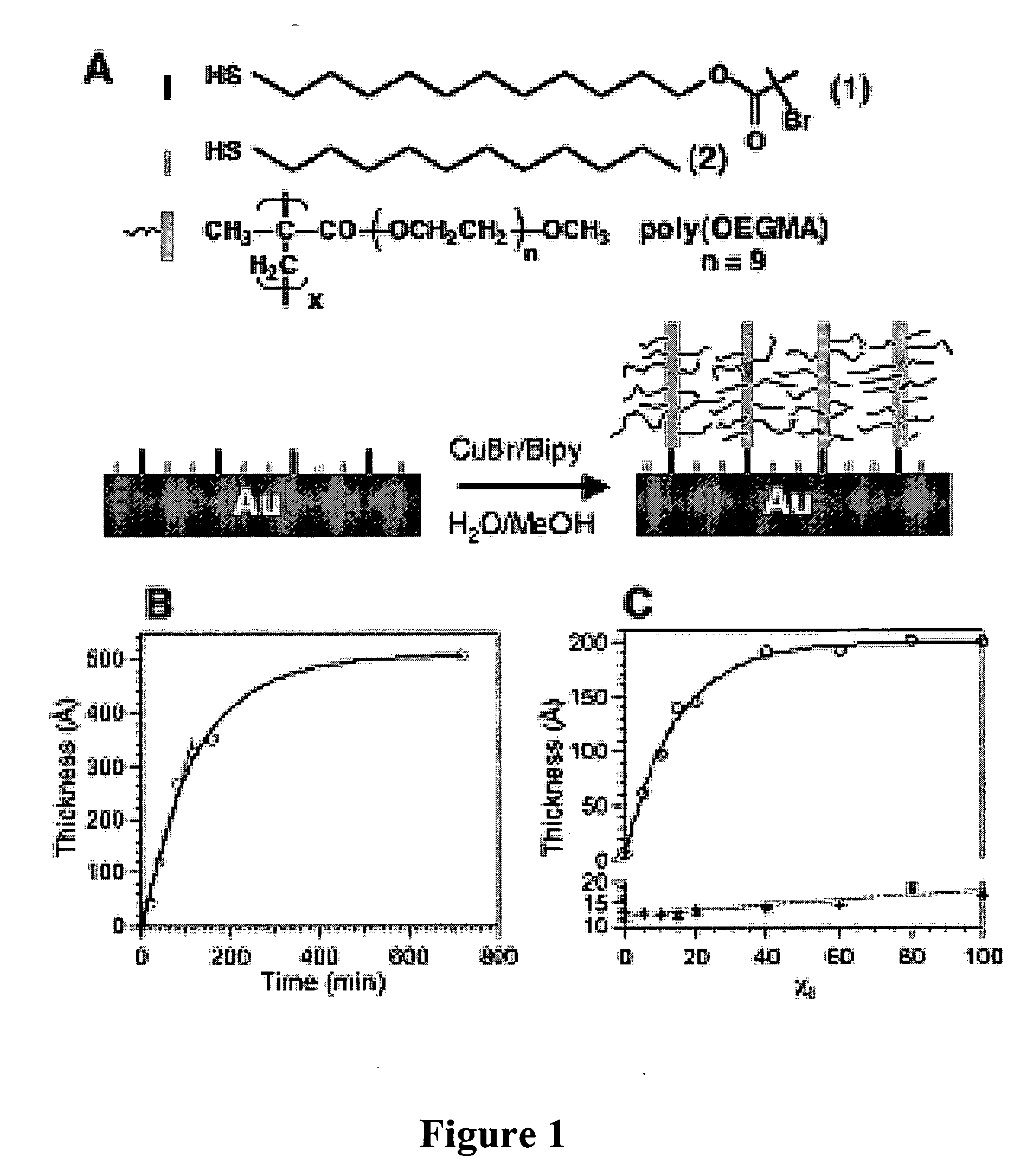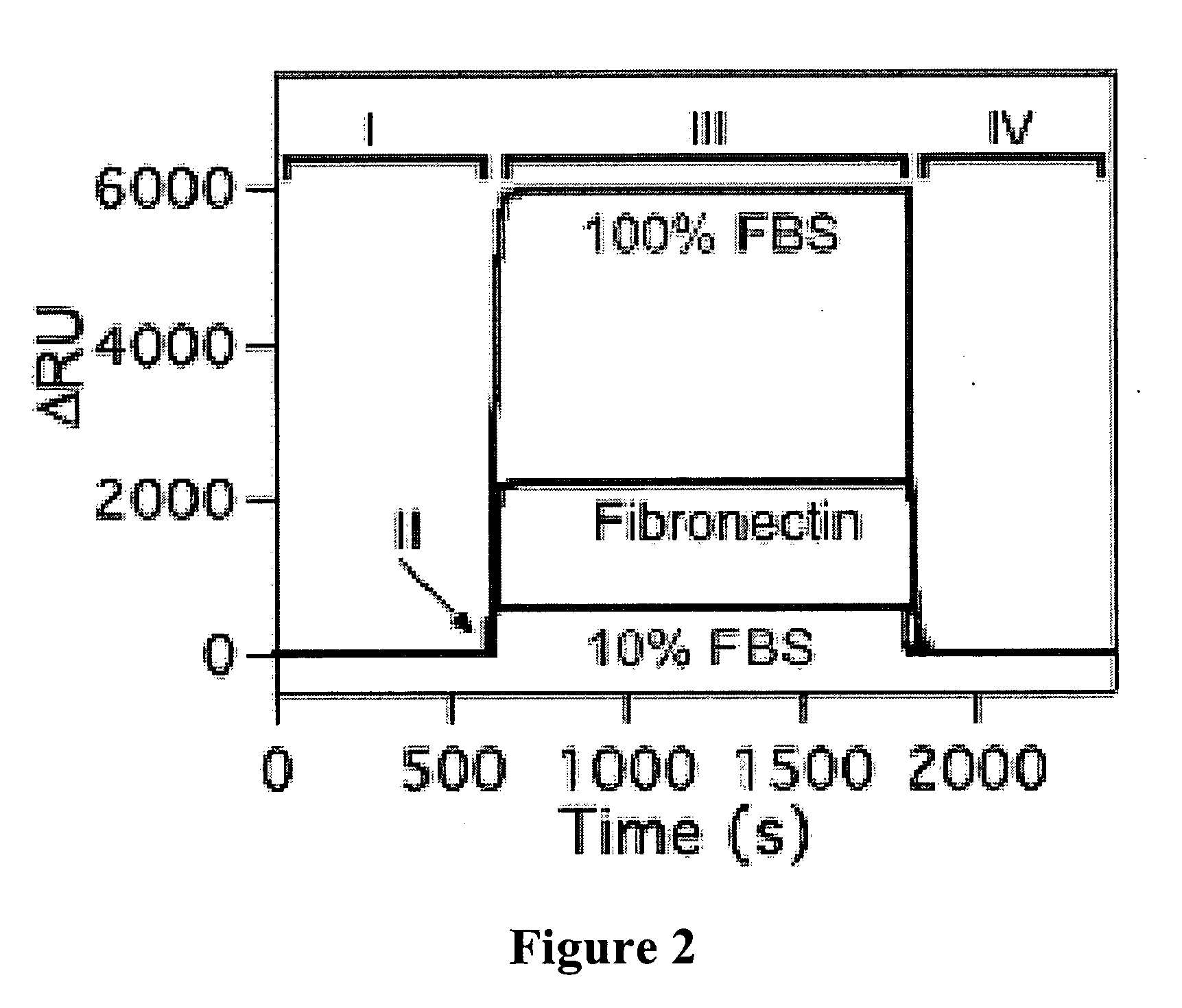Tunable nonfouling surface of oligoethylene glycol
a technology of oligoethylene glycol and non-fouling surface, which is applied in the field of articles, can solve the problems of limited robustness of systems, low surface density of peg chains, and limited protein and cell resistan
- Summary
- Abstract
- Description
- Claims
- Application Information
AI Technical Summary
Problems solved by technology
Method used
Image
Examples
examples
[0067] The present invention provides, among other things, methods to synthesize nonfouling coatings that in some embodiments combine the advantages of SAMs, namely their high surface density and ease of formation, with those of polymers-thicker, more robust films and versatile architecture and chemistry—are of significant interest for a variety of applications. Among other things, we show herein that (EG)n functionalized polymer brushes of tunable thickness in the 5-50 nm range, a thickness inaccessible to SAMs or polymer grafts, can be easily synthesized by surface-initiated polymerization (SIP) (Zhao, B., Brittain, W. J., Prog. Polym. Sci. 2000, 25, 677, and references therein), that these polymer brushes exhibit no detectable adsorption of proteins and are cell-resistant for up to a month under typical cell culture conditions, and that the synthesis method is compatible with a range of patterning techniques from the nano- to the micro-scale, which enables the patterning of cells...
PUM
| Property | Measurement | Unit |
|---|---|---|
| length | aaaaa | aaaaa |
| time period | aaaaa | aaaaa |
| time | aaaaa | aaaaa |
Abstract
Description
Claims
Application Information
 Login to View More
Login to View More - R&D
- Intellectual Property
- Life Sciences
- Materials
- Tech Scout
- Unparalleled Data Quality
- Higher Quality Content
- 60% Fewer Hallucinations
Browse by: Latest US Patents, China's latest patents, Technical Efficacy Thesaurus, Application Domain, Technology Topic, Popular Technical Reports.
© 2025 PatSnap. All rights reserved.Legal|Privacy policy|Modern Slavery Act Transparency Statement|Sitemap|About US| Contact US: help@patsnap.com



